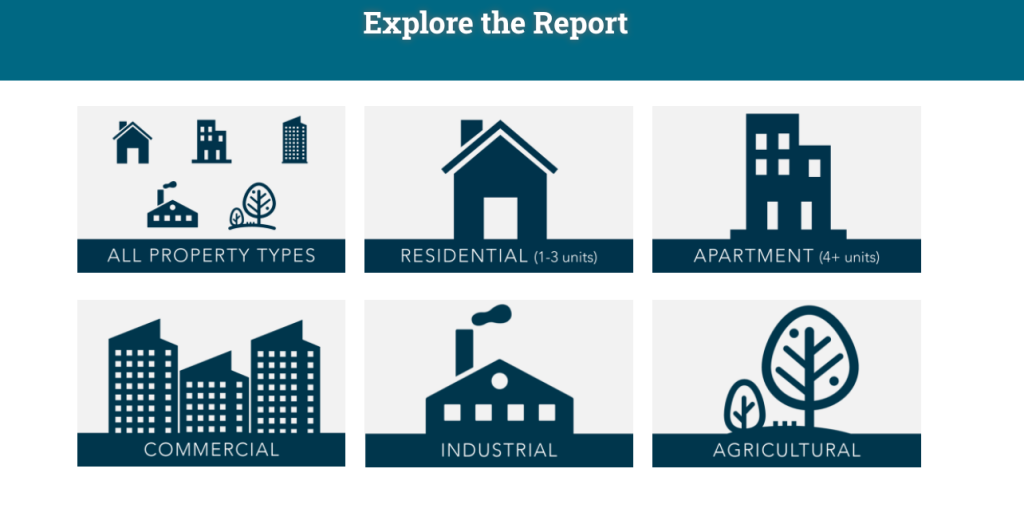Updating the assessor report: A new approach
Assessors’ offices exist to provide fair and equitable property valuations for a jurisdiction. These valuations power the property taxes that fund important public services including parks, libraries, social services, public safety health, roads and recycling. The foundation of an equitable valuation process is the assessor’s ability to create consistency around how each property is treated. The accuracy of data used for assessments is critical, as is its transparency.
While assessor reports contain valuable data and context, these dense PDFs are not known for being user-friendly. For most, navigating and understanding these reports is a challenge.
Demystifying data empowers communities
In Ramsey County, Minn. — like many jurisdictions — those seeking property tax information had to file a request, wait for it to rise to the top of the queue, wait for staff to pull the data, and wait for a response.
Determined to find a better way, Ramsey County Assessor Luis Rosario requested a new approach to simplify and enhance access to annual assessment report via the county’s open data site.
“Picture the scenario where an appraiser is visiting with a property owner with questions about changes in their home’s value,” he explains. “With our report in our open data portal, we can pull up their neighborhood data on a map to review median values, compare trends, and explain more of our process in real time. We can provide faster service this way, which is highly efficient for us, too.”
He recognized that broader access to easy-to-understand, intuitively organized information is important for decision-makers, residents, and other government personnel. For example, individuals can determine when property assessment appeals may be advisable, or they can surface areas for corrective action in the assessment process. In addition, staff in community or economic development can tap into the data to analyze assessment changes over time and better understand trends for specific neighborhoods or communities.
The power of storytelling
This is quite a change from how we used to share report data – in Excel spreadsheets and one very large PDF file. With only static information to offer, we fielded a significant volume of information requests, especially from titling and real estate professionals.
These requests have declined with the interactive dashboard that helps facilitate self-service. More than 5,000 viewers have visited the dashboard’s landing page since its inception, a significant increase in viewers over the previous year’s PDF report.
Powered by Tyler Technologies’ enterprise data platform, the dashboard includes a collection of data story pages that provide context and narrative around the report data. We have used Tyler’s data storytelling app for other topics, including voter turnout, homelessness response, and even the county’s deer population.
For assessor information, the dynamic webpages are a true departure from digging for data in a PDF. They offer maps and interactive datasets on a range of topics, including median property value. The story content provides a useful step-by-step narrative, and the underlying data is available for further analysis. We received emails from academic researchers who appreciate the data in this format, and we know that county residents, staff, and other assessors are downloading our datasets from the site and digging deeper.
ROI
Internally, providing the report in this new format will save our team nearly 200 hours annually. Because of critical innovations like this report, the Assessor’s Office has not reduced staff during the pandemic. We can leave one open position unfilled, and work more efficiently with existing staff. The intuitive nature of the dashboard means that staff members of all abilities can work with the data. Reports and insight are available at the click of a button and in record time.
In addition to the time savings, the new approach brought together two sides of our assessment house: commercial and residential. As we planned the report, we discovered the two teams had slight differences in their processes, which can be common in counties. One of the benefits for all of us was getting everyone in a room together to agree on a single process for presenting the data. Now people can compare commercial and residential in a more apples-to-apples way.
The result has been a positive return on investment. On the public service end, residents are empowered with clear explanations and context for what is going on in the county and with their property. We’ve expanded our audience and our reach, which is a huge win for transparency and education. For staff, employees no longer answer the same questions repeatedly, and the county will realize thousands of dollars in time savings.
Our new guiding practice in Ramsey County is that any dataset available on the portal must include a data story. As we’re mastering storytelling, we’re moving from data points to holistic pictures, a practice that that will ultimately help us create more informed constituencies, boost policy buy-in, and improve faith in county staff and officials.
Kristine Grill is Ramsey County, Minn.’s Open Data Coordinator.




















